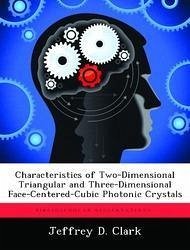Photonic crystals (PhC's) are periodic structures of differing dielectrics that create a photonic band gap (PBG). A PBG, in turn, inhibits the propagation of electromagnetic waves of a speci c frequency range. This thesis focuses on the fabricationand characterization of triangular-structured, two-dimensional PhC's with a PBG de-signed for visible wavelengths and with applications in visible integrated photonicsystems. A three-dimensional PhC with a PBG in the infrared is also studied for itscharacteristics in regard to its PBG.The two-dimensional fabrication processes pursued were: focused ion beam,electron beam lithography and holographic photo-polymerization/lithography. Thefabrication techniques and materials used to create the PhC in part determined thecharacterization technique required to investigate the PBG. Characterization tech-niques include: the coupling of a beam by means of a prism into a wave-guidingmedium in which the PhC has been fabricated, Fourier transform infrared spectrom-eter, spectrophotometer, and edge ring techniques. Analysis of the transmission andre-ectance properties of a PhC for various incident angles (within the two dimen-sional plane of the PhC) con rms the presence of a PBG. The design of the PhC wasbased on a program created to display gap maps for triangular structures. The PBGof the structure, designed from the gap maps, was modeled using another programcreated to display band diagrams for triangular structures. Finite di erence timedomain (FDTD) software was then applied to compare the experimental results withthe modeling and simulation of the PhC fabricated. Two di erent FDTD softwareswere also evaluated.The three-dimensional PhC sample obtained was successfully tested with theFourier transform infrared spectrometer and the spectrophotometer.








